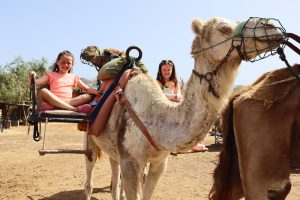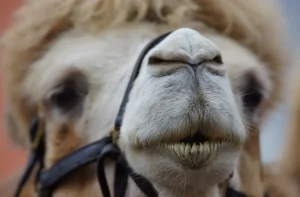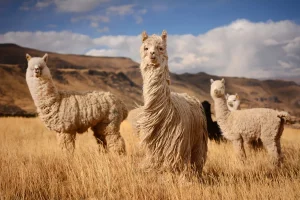Camels are herbivorous mammals whose diet naturally contains salt. In the wild, they mostly eat grass and desert plants. However, in times of extreme hunger, camels can consume a wider variety of foods, adapting to whatever is available in their harsh environment.
These resilient animals are capable of traveling long distances across deserts in search of food.
Food Storage in the Hump
Contrary to the popular myth, camels do not store water in their humps—they store fat. This fat acts as an energy reserve that can be metabolized when food is scarce.
Living in desert regions means camels often have limited access to food. They can survive for up to two weeks without eating, relying on the reserves in their hump. A well-fed camel can store up to 36 kg (79 lbs) of fat, which gradually decreases if food is not available, causing the hump to shrink.
Camel Lips and Digestive System
One of the camel’s most distinctive features is its tough, flexible lips, which allow it to eat plants that are dry, thorny, or extremely hard.
Their three-chambered stomach is specially designed to extract maximum nutrients from food. Camels chew and re-chew their food, ensuring that every bit of nutrition is absorbed. This digestive efficiency helps them thrive even in environments where vegetation is scarce.
Camel Diet in the Wild and in Captivity
In the wild, camels graze on:
- Dry grasses
- Thorny plants
- Roots
- Salt-tolerant vegetation
Over time, camels have developed a tolerance for plants with high salt content, which other animals would find inedible.
Domesticated camels are often fed:
- Leaves and fresh plants
- Oats
- Millet
- Wheat
- Dates
Additionally, camels can absorb moisture from the vegetation they consume, gaining an extra source of hydration, which is vital in the desert.




